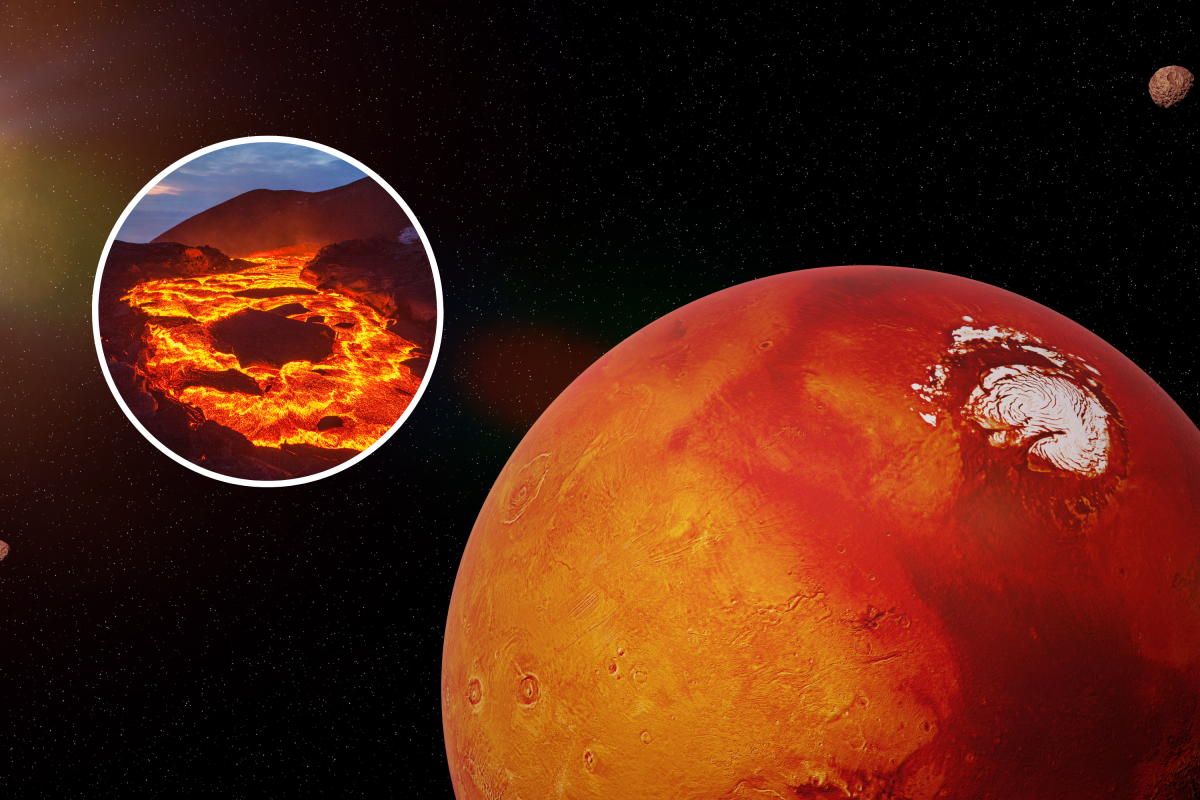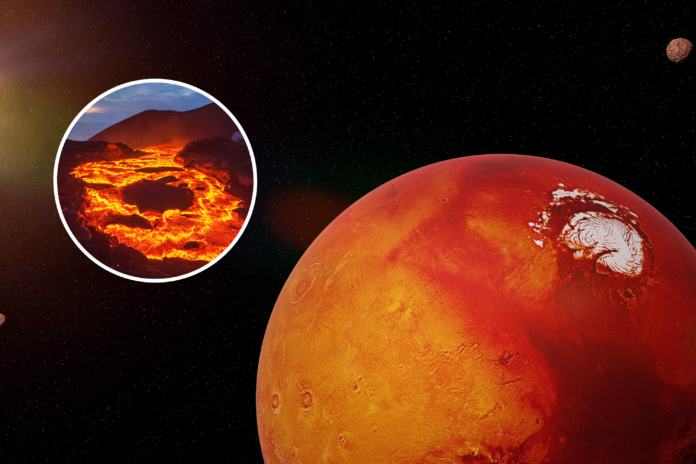Scientists have discovered a “long-sought” giant volcano hidden in plain sight on Mars.
The find, which was made alongside a buried ice glacier to the east of Mars, was unveiled at the 55th Lunar and Planetary Science Conference held in The Woodlands, Texas. The finding is also laid out in a brand new study.
The giant volcano was found by repeatedly photographing the planet with orbiting spacecraft. Surprisingly, it had actually been hiding in plain sight for decades in one of Mars’ most famous regions. It was, however, eroded “beyond easy recognition,” a summary of the find reported.
NASA/USGS Mars globe
The huge volcano stands at 29,600 feet and stretches for 280 miles. Its size and history indicate that it has been active for a long while.
Scientists noticed a recent volcanic deposit beneath the volcano, which indicates the glacier ice is still there.
The presence of the glacier, paired with the giant volcano, presents a rare opportunity to study the red planet’s geologic evolution. Studying this area of Mars could help scientists search for life, and survey it for potential human habitation.
“We were examining the geology of an area where we had found the remains of a glacier last year when we realized we were inside a huge and deeply eroded volcano,” Pascal Lee, planetary scientist with the SETI Institute and the Mars Institute based at NASA Ames Research Center, and the lead author of the study, said in a summary of the find.
This area of Mars is home to layered mesas and canyons, which mark it as a region of volcanic activity.
The remnants of a caldera, which used to be a collapsed volcanic crater with a lava lake, are also visible.
“This area of Mars is known to have a wide variety of hydrated minerals spanning a long stretch of Martian history. A volcanic setting for these minerals had long been suspected. So, it may not be too surprising to find a volcano here,” explained Sourabh Shubham, a graduate student at the University of Maryland’s Department of Geology and the study’s co-author. “In some sense, this large volcano is a long-sought ‘smoking gun.'”
The volcano presents a long history that scientists can now explore. However, there is still a lot that they do not know about it.
They may know that it had been active for a very long time, but exactly when it became so is a mystery.
There are also clues that it has erupted fairly recently. But whether it is still capable of producing an eruption, and whether it is likely, is also not certain.

dottedhippo / Vershinin-M
“It’s really a combination of things that makes the Noctis volcano site exceptionally exciting. It’s an ancient and long-lived volcano so deeply eroded that you could hike, drive, or fly through it to examine, sample, and date different parts of its interior to study Mars’ evolution through time. It has also had a long history of heat interacting with water and ice, which makes it a prime location for astrobiology and our search for signs of life,” Lee said.
“Finally, with glacier ice likely still preserved near the surface in a relatively warm equatorial region on Mars, the place is looking very attractive for robotic and human exploration.”
Do you have a tip on a science story that Newsweek should be covering? Do you have a question about Mars? Let us know via [email protected].
Uncommon Knowledge
Newsweek is committed to challenging conventional wisdom and finding connections in the search for common ground.
Newsweek is committed to challenging conventional wisdom and finding connections in the search for common ground.


